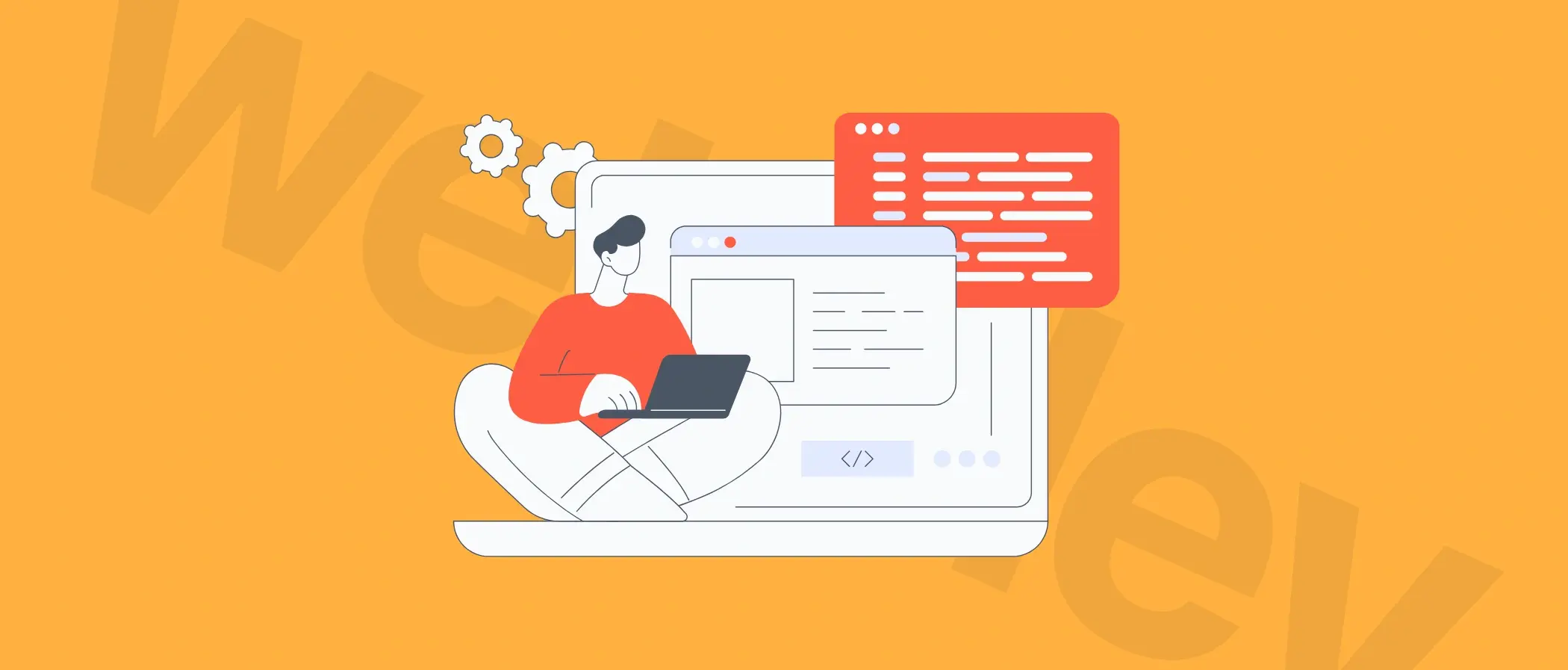How Does Web Accessibility Impact SEO and Business Growth?
Think of your website as a store where 1 in 4 customers can’t get through the door. That’s what happens when web accessibility is ignored. Small issues—like missing alt text or tiny buttons—block users, hurt conversions, and increase legal risk. Fixing them is simple, improves usability for everyone, and builds a stronger, more inclusive brand.

TL;DR
Yes, you can be losing customers due to accessibility issues. ~1 in 6 people worldwide live with a disability — that’s a huge slice of your potential market. (WHO)
It’s not just ethics; it’s economics. Most sites still ship with basic barriers (contrast, missing alt text, unlabeled forms). Fixing the top offenders removes real friction and boosts conversions. WebAIM’s 2025 scan of 1M home pages found 51 errors/page on average and 94.8% had detectable WCAG failures — plenty of low‑hanging fruit. (WebAIM)
Legal risk is rising. In H1 2025 alone, 2,019 US digital‑accessibility lawsuits were filed, with ecommerce targeted in 69% of cases. Overlays/widgets didn’t prevent suits. (UsableNet)
US vs EU: In the US, ADA applies to business websites even without a private‑sector spec; in the EU, the European Accessibility Act now applies (June 28, 2025) to e‑commerce services. (ADA.gov, AccessibleEU)
SEO reality check: Accessibility itself isn’t a direct Google ranking factor, but many accessibility fixes (alt text, headings, media text equivalents, clean HTML) help search and reduce bounce. (Search Engine Journal, Google for Developers)
Let’s Start with a Quick Web Accessibility Self-Test
If you’re asking yourself: “Could I be losing customers due to accessibility issues?”, the answer is (highly likely): yes.
Web accessibility means making sure every visitor can complete a purchase with ease. A five-minute, no-tools-needed check can reveal if you’re unintentionally leaking conversions:
Keyboard navigation: Can you tab through your navigation, filters, and add-to-cart without touching the mouse?
Focus visibility: Is it always clear where you are on the page when tabbing?
Alt text: Check three product images. Do they have natural, descriptive alt text (not keyword stuffing)? Remember, Google uses this for image search and context.
Zoom resilience: Try the checkout flow at 200% zoom, both on desktop and mobile. Is anything clipped, overlapping, or untappable?
If someone with low vision can’t read your product descriptions, they won’t buy. If a video lacks captions, you lose customers who browse without sound. If your checkout form isn’t keyboard-friendly, you’re leaving money on the table.

Marcin Sulikowski
co-CEO, Naturaily
Accessibility is just one pillar of creating a site that performs. For a broader look check out our guide on how modern optimization fuels business growth.

Accessibility is buying power
Our experts can help you remove barriers and build a site that welcomes every customer.
Accessibility and SEO: a Hidden Advantage
Based on our experience, improvements in web accessibility often translate directly into better SEO. Search engines, like users, value clear structure, fast performance, mobile-friendly design, and descriptive alt text.
An accessible site naturally aligns with Google’s ranking factors. Proper heading structures help search engines understand your content. Alt text doubles as both a screen reader aid and an SEO signal. Faster, cleaner code means better rankings and lower bounce rates.
So while accessibility isn’t listed as a direct ranking factor, it indirectly pushes your site higher in search results by aligning with what search engines reward.
Quick wins to improve your content operations:
alt text that describes the image’s purpose
one H1 per page
logical headings
transcripts for videos
descriptive link text (“View size guide” beats “Learn more”).

Accessibility Benefits for Business
Many businesses view web accessibility as a costly add-on rather than a strategic investment, but the financial returns are clear. By making your website accessible, you immediately expand your potential customer base by about 15% (as we’ve mentioned before, roughly 15% of the global population lives with some form of disability).
Removing barriers like low contrast or tiny buttons creates a smoother, more efficient user experience for everyone, which directly boosts conversion rates and reduces customer service costs as users can find what they need on their own.
Instead of being a sunk cost, accessibility is an investment that builds lasting returns by increasing your reach, improving conversions, and fostering stronger customer loyalty.
Brand Growth Through Inclusion
Beyond the numbers, accessibility is a powerful brand story. Consumers are increasingly loyal to companies that demonstrate real inclusivity, and in an age where social responsibility drives purchasing decisions, an accessible digital experience proves your company genuinely cares about all customers.
Businesses that embrace inclusive design consistently report stronger reputations, higher customer retention, and better long-term growth. This makes web accessibility a significant competitive advantage.
While these benefits are clear in theory, the real impact of accessibility—or the lack of it—comes to life through the experiences of people with disabilities themselves. Beyond compliance checklists and brand positioning, inaccessible design directly shapes how individuals feel about a company: excluded, frustrated, or empowered.
Web accessibility case study: The human cost of inaccessibility
A recent study in Argentina asked 53 people with disabilities to share their real experiences using government, banking, and e-commerce websites. Their stories highlight why accessibility is not just a technical requirement, but a business and brand imperative.
For many, everyday tasks like paying bills or booking a doctor’s appointment online turned into barriers:
It is sad that every time my grandson visits me, I have to ask him to help me with the paperwork online. I’m afraid he won’t want to come anymore. — Nelba, 72
Others described the emotional toll of being forced to rely on inaccessible tools:
You cannot imagine what it feels like when an important result of a private lab test … is in a non-accessible PDF. Without really meaning to, I had to ask my mother to read it to me. — Tomás, 26, blind
These stories underline a hard truth: inaccessible websites block transactions, damage trust, dignity, and customer loyalty. Conversely, companies that invest in inclusive design open doors to millions more users, strengthen their brand, and position themselves as truly customer-centric.
2025 Legal Landscape: ADA, EAA, and the Risk of Non-Compliance
For many companies, the wake-up call on accessibility comes in the form of a lawsuit. In the U.S., the Americans with Disabilities Act (ADA) has led to thousands of website accessibility lawsuits, impacting businesses from small startups to global brands. Across the Atlantic, the European Accessibility Act (EAA) is setting a new standard for digital compliance, and the penalties for non-compliance are becoming more common.
Failing to make your website accessible can lead to expensive legal settlements, government fines, and a public relations nightmare. The risk is very real—and entirely preventable. Ultimately, compliance isn't just about avoiding trouble; it's about future-proofing your business against costly liabilities.
👉 Practical takeaway: If you sell into the US or EU, align with WCAG 2.2 AA and publish an accessibility statement.
What Changed in WCAG 2.2?
The release of WCAG 2.2 introduced several updates that directly impact ecommerce flows—especially checkout and mobile interactions. The most important changes include:
Focus not obscured (AA): Elements like sticky bars, cookie banners, and pop-ups must not cover the item a user has selected. If a customer can’t see where they are in the flow, they’re more likely to abandon.
Target size minimum (AA): Tappable targets should be at least 24×24 CSS pixels or spaced apart adequately. This is a big usability boost on mobile, making filters, swatches, and pagination easier to hit without errors.
Dragging movements (AA): Any feature requiring dragging (like sliders or sortable lists) must have a simpler alternative, such as buttons, so all users can complete actions.
Consistent help (A): Links to support—whether chat, phone, or help pages—must appear in the same place across steps. This consistency is vital during checkout, where users may need quick assistance.
Redundant entry (A): Customers shouldn’t have to re-enter the same information in one process. Reducing duplicate fields lowers friction and checkout fatigue.
Accessible authentication (AA): Logins must not rely solely on memory puzzles or CAPTCHAs. Alternatives like passwordless links, biometrics, or allowing password manager paste are encouraged.
One more note: WCAG 2.2 also removed the old 4.1.1 Parsing requirement, simplifying compliance around markup errors.
If you’d like to see a website that has successfully passed an accessibility audit and showcases best practices, check out the case study below and explore our client’s site.
Bronson Labs wanted to add content, integrations, and special offers quickly. After migrating to Shopify, all website changes became easy, cutting maintenance costs threefold.
5/5
Clutch review
70%
Less dev time
3x
Lower maintenance cost

How to Make Your Site Accessible (90‑Day Plan)
Days 0–14: baseline & quick wins
Run a hybrid audit to have a clear picture of where you stand. Combine automated scans (tools like axe, WAVE, or Lighthouse) with a manual check using just your keyboard and a screen reader (NVDA or VoiceOver). To make it simple, W3C’s “Easy Checks” are a great resource for spotting obvious problems.
Prioritize fixes on your highest-impact templates—think header and navigation, product detail pages, collections and filters, cart, checkout, and account pages.
Quick wins that immediately improve usability:
improve color contrast where needed
add missing alt text to images
ensure focus styles are visible
label all form fields clearly
add a “skip to content” link for faster navigation
Days 15–60: code & content fixes
Time to dig deeper into code and content—map issues to WCAG 2.2 AA standards. Pay special attention to the newest requirements, like ensuring focus isn’t hidden under sticky bars, making tap targets larger, and offering drag-free alternatives for sliders or sortables.Then clean up the structure—use headings in logical order, write clear link text that describes purpose, and only apply ARIA roles when necessary (overusing ARIA can create more confusion than clarity).
What is ARIA?
ARIA stands for Accessible Rich Internet Applications. It’s a set of attributes you can add to HTML code to make dynamic, interactive content easier for assistive technologies (like screen readers) to understand.
Think of ARIA as “extra labels and hints” that tell a screen reader:
What something is (e.g., “This is a navigation menu”).
What state it’s in (e.g., “This accordion is expanded” vs. “collapsed”).
What action is possible (e.g., “This button opens a dropdown”).
After that, rework templates. Make sure there are no keyboard traps, and that focused elements are always visible (not obscured by pop-ups or sticky elements).
Days 61–90: verify, publish & monitor
Now it’s time to close the loop. Automated checks won’t catch everything, so re-test with real users—ideally including a screen reader user, as W3C recommends. Publish an Accessibility Statement that outlines your commitment, scope, and a clear way for users to report issues. Then, make accessibility part of QA by running monthly checks and re-scanning after updates. In 90 days, you’ll have a site that meets WCAG 2.2 AA and a sustainable process to keep it that way as your business grows.
Ready to Grow Through Web Accessibility?
Web accessibility directly impacts your business. By creating a site that’s easier to use for everyone, you’re reducing legal risks, expanding your customer base, improving conversions, and strengthening brand loyalty. The companies that act now will set themselves apart as leaders in both inclusivity and performance.
Let’s talk about how we can help you identify accessibility gaps and unlock business growth with a tailored accessibility strategy.
FAQ
Web Accessibility Questions and Answers
Unlock growth through web accessibility
Make your website inclusive, compliant, and conversion-ready—start with a free accessibility audit today.



